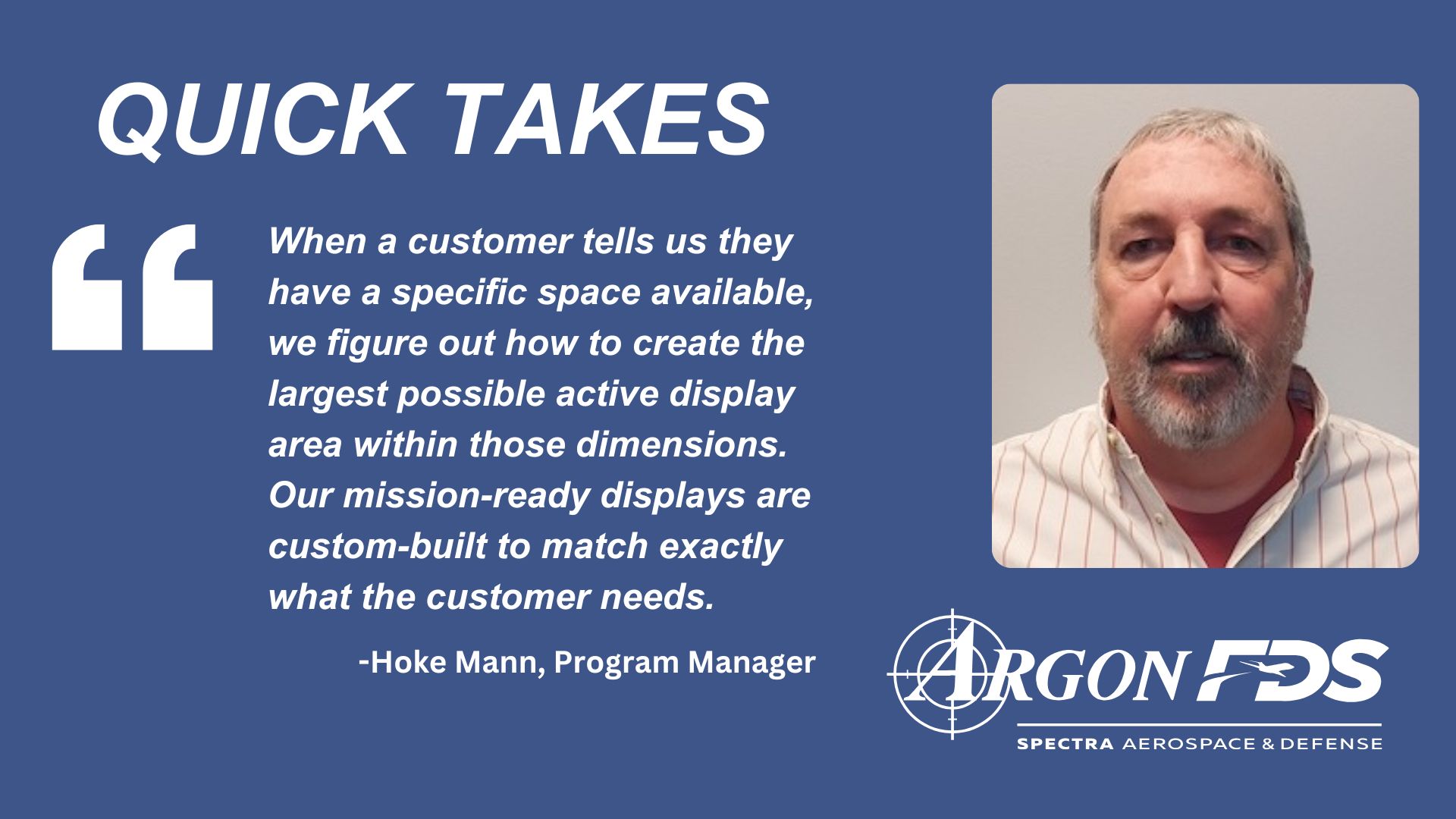Q&A with Hoke Mann: The path to creating cutting-edge displays for defense applications
March 10, 2025
An inside look at military-grade display systems with Program Manager Hoke Mann
Rugged displays for defense applications demand a special blend of durability, performance and precision engineering. In this Quick Takes Q&A, ArgonFDS Program Manager Hoke Mann offers insights into how battle-tested display systems move from concept to deployment. Mann’s perspective addresses the complex balance between customer needs, advancements in technology and the thorough testing processes essential for ensuring that Argon’s solutions operate flawlessly on ground mobile, naval and airborne platforms — including the E-7
and E-3.
Q: What does your role as a program manager at ArgonFDS entail?
A: It’s really about keeping everything on track from start to finish. Once our business development team lands a contract, I become the main point of contact for the customer throughout the entire development journey. I create detailed project schedules, distribute work to our mechanical and electrical engineers and make sure we’re meeting both customer expectations and our company’s revenue goals.
A huge part of my role involves coordinating between different teams – I’m constantly interfacing with sales and customers to provide updates, while also working with engineering, operations and quality teams to ensure smooth design, sourcing, prototyping, production and shipping.
Q: What key steps do you monitor to successfully complete a project?
A: Managing these projects requires meticulous oversight of multiple simultaneous processes. My approach involves:
• Creating a detailed work breakdown structure using Microsoft Project that maps the entire development timeline
• Establishing clear communication channels between our team and the customer
• Leading weekly project meetings to track progress and address any issues before they impact delivery
• Ensuring our ERP system has accurate bills of materials so component deliveries align with integration schedules
• Coordinating all contractual deliverables to meet customer timelines
• Organizing complete documentation packages that operations needs for production
• Conducting formal milestone reviews with stakeholders at critical stages — from System Requirements Review (SRR) through Preliminary Design Review (PDR), Critical Design Review (CDR), Test Readiness Review (TRR), and Production Readiness Review (PRR)
The structured approach keeps everyone aligned and helps us navigate the complexities of developing mission-critical display systems on schedule.
Q: How does Argon’s approach to rugged displays differ from that of competitors?
A: We’re much more requirements-driven and purpose-built. Many competitors build their own product families in standard sizes, and either they fit in the customer’s space, or they don’t. At Argon, we take a different approach. When a customer tells us they have a specific space available, we figure out how to create the largest possible active display area within those dimensions. Our mission-ready displays are custom-built to match exactly what the customer needs.
Q: What makes a display “ruggedized?”
A: The biggest factor in ruggedization is the mechanical chassis or packaging. Military users, especially ground troops, can be rough on equipment. We also install protective cover glass or polycarbonate on the front to prevent anything from penetrating and shattering the LCD. This cover also provides anti-reflective coating for better sunlight readability. Our military-grade, battle-tested monitors undergo extensive qualification testing according to military standards. That includes environmental tests for extreme heat and cold, vibration, shock, altitude, explosive atmospheres and water resistance — plus electromagnetic compatibility (EMC) tests.
Q: What types of testing do these displays undergo?
We follow DO-160 or MIL-STD-810 qualification testing protocols. Some of the more interesting tests include a ball-drop test, where we swing a baseball-sized weight at the display. And there’s also the MIL-S-901 — sometimes called a barge or “hammer of Thor” test — which simulates resonant frequencies from something like a torpedo hit on a submarine.
***
As defense communications technology evolves, the demands placed on rugged displays grow increasingly complex.
“The real challenge isn’t just building rugged display monitors that survive extreme conditions,” Mann says. “When a soldier or pilot relies on our screen to complete their mission, there’s no room for compromise — it has to function flawlessly every time, in any environment. It’s important work, and it’s what drives our team every day.”


